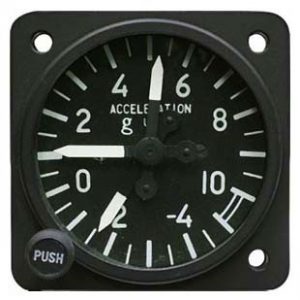 MIL-STD-810G covers steady-state acceleration experienced by material in the service environment. The Method is used to assure material continues to operate after testing. The Method is also used to assure the material does not become hazardous after exposure to inertial loads experienced in a crash. The method is applicable to material that is installed in aircraft, helicopters, manned aerospace vehicles, air-carried stores, and ground/sea-launched missiles. Method 513.5 is 13 pages long plus a 6 page annex discussing Test Considerations . Method 513.5 includes a note stating that tailoring is essential. A large part of the Method is devoted to tailoring the tests to the material and intended environment. This Method is different from Method 514.6 (Vibration) and Method 516.6 (Shock) in that the acceleration is applied slowly enough with sufficient time allowed to fully distribute the resulting loads through the material and dynamic response of the material is not excited. This method is not adequate for testing aerodynamic loads. Method 501.5 (High Temperature) should be conducted prior to this Method. The effects of acceleration include:
MIL-STD-810G covers steady-state acceleration experienced by material in the service environment. The Method is used to assure material continues to operate after testing. The Method is also used to assure the material does not become hazardous after exposure to inertial loads experienced in a crash. The method is applicable to material that is installed in aircraft, helicopters, manned aerospace vehicles, air-carried stores, and ground/sea-launched missiles. Method 513.5 is 13 pages long plus a 6 page annex discussing Test Considerations . Method 513.5 includes a note stating that tailoring is essential. A large part of the Method is devoted to tailoring the tests to the material and intended environment. This Method is different from Method 514.6 (Vibration) and Method 516.6 (Shock) in that the acceleration is applied slowly enough with sufficient time allowed to fully distribute the resulting loads through the material and dynamic response of the material is not excited. This method is not adequate for testing aerodynamic loads. Method 501.5 (High Temperature) should be conducted prior to this Method. The effects of acceleration include:
- Structural deflections that interfere with materiel operation.
- Permanent deformation, structural cracks, and fractures that disable or destroy materiel.
- Broken fasteners and supports that result in loose parts within materiel.
- Broken mounting hardware that results in loose materiel within a platform.
- Electronic circuit boards that short out and circuits that open up.
- Inductances and capacitances that change value.
- Relays that open or close.
- Actuators and other mechanisms that bind.
- Seals that leak.
- Pressure and flow regulators that change value.
- Pumps that cavitate.
- Spools in servo valves that are displaced causing erratic and dangerous control system response.
Section 2 provides formulas for determining g-loads for fighter aircraft because of the high roll and pitch rates and tables of suggested g-loads for other platforms such as helicopters, manned aerospace vehicles, ground-launched missiles, etc. There is also a table of suggested g-loads for the Crash Hazard Acceleration test which goes up as high as 40-g. Required apparatus for testing consists of either a centrifuge of adequate size or a rocket-powered sled. This Method provides for three procedures:
- Procedure I – Structural Test The item under test is subjected to the specified g-level while not operating. After the test, test the item for proper operation.
- Procedure II – Operational Test The item under test is turned on and operating normally while subjected to the g-load.
- Procedure III – Crash Hazard Acceleration Test Very high non-operational g-loads are imparted to assure the item under test does not become a hazard during a crash. Items, such as aircrew seats, are tested to ensure they remain attached to the aircraft structure during a crash.
